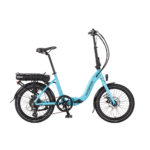How do the manufactures measure claimed torque? Is it at the crank or at the wheel? If it's at the wheel then it would be dependent on gearing so how would that work? Bosch claims 60 Nm I think while the Impulse 11 claims 70 Nm which is nearly double the 40 Nm for the first Impulse. I don't know if that 40 NM was prior to the Impulse 1 2013 Sport software update which upped climbing ability, and so I assume torque substantially? Or in fact if any of these figures mean a thing.
70 Nm is about 50 ft/lb so more than an original 850 Mini which stated 44 ft/Ib at about half of max revs. How can that be?
Are we in something like the old horsepower wars? Then Jaguar for instance following industry practice claimed 265 bhp for the E type at the crank, by running a bare motor on the bench without ancillaries and manually adjusting the ignition and carburetion all the way through the rev range. The truth was that it would have been pushed to get 160 bhp at the wheels.
So how do they measure torque on e bikes and how true are the claims?
70 Nm is about 50 ft/lb so more than an original 850 Mini which stated 44 ft/Ib at about half of max revs. How can that be?
Are we in something like the old horsepower wars? Then Jaguar for instance following industry practice claimed 265 bhp for the E type at the crank, by running a bare motor on the bench without ancillaries and manually adjusting the ignition and carburetion all the way through the rev range. The truth was that it would have been pushed to get 160 bhp at the wheels.
So how do they measure torque on e bikes and how true are the claims?
Last edited:






